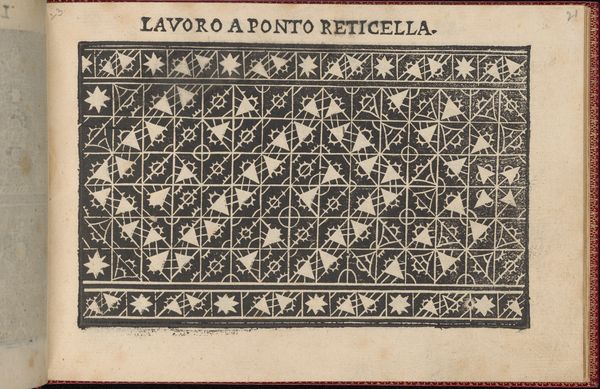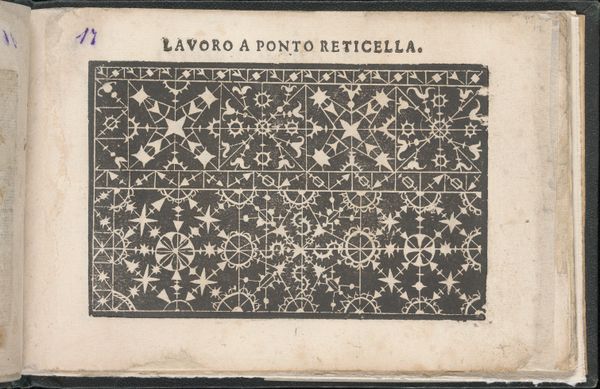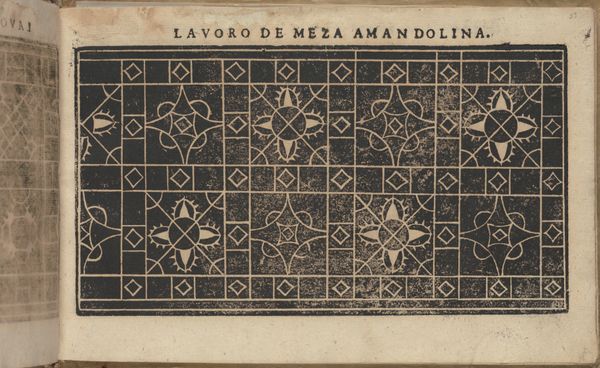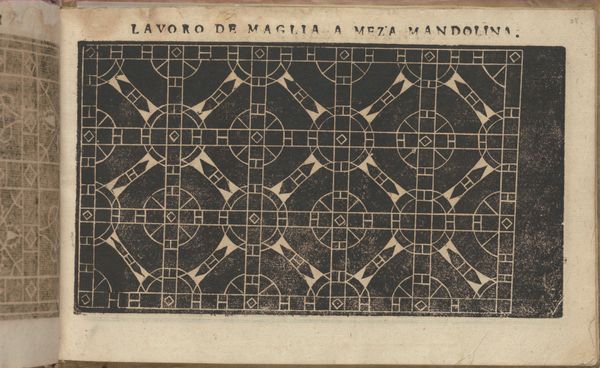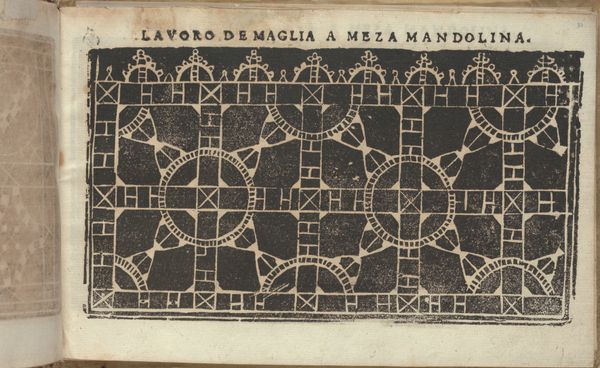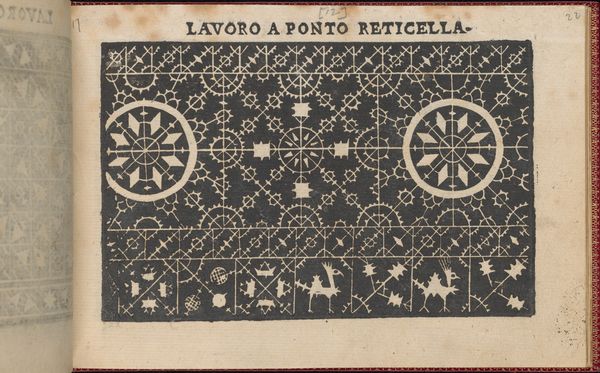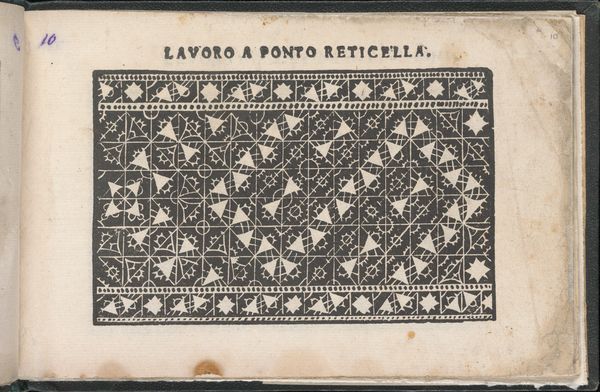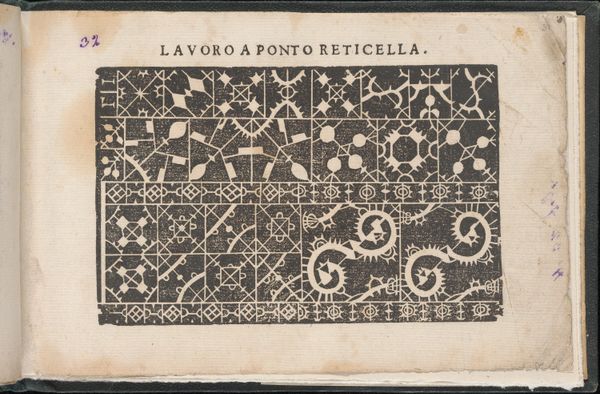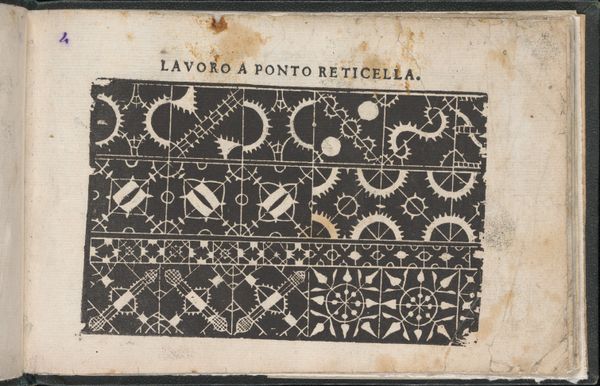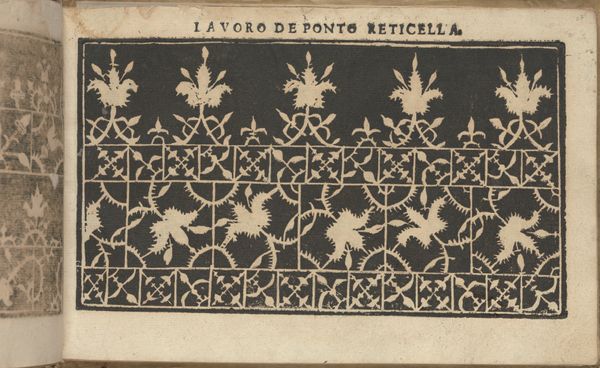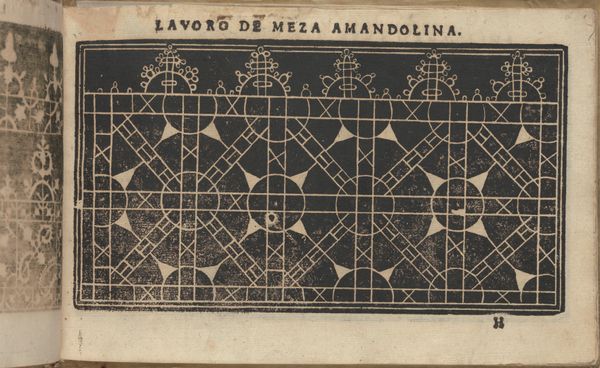
Studio delle virtuose Dame, page 31 (recto) 1597
0:00
0:00
drawing, print
#
drawing
# print
#
book
#
geometric
#
italian-renaissance
Dimensions: Overall: 5 1/2 x 8 1/16 in. (14 x 20.5 cm)
Copyright: Public Domain
Curator: Here we have a page, specifically page 31, from "Studio delle virtuose Dame" or "Studio of Virtuous Women," created in 1597 by Isabella Catanea Parasole. Editor: Immediately, I'm struck by how incredibly graphic it is! The sharp contrast between the black ground and these intricate white patterns. It has an almost hypnotic quality. Curator: Indeed. What we're seeing here is a drawing intended as a print, meant to act as a pattern book for lacemaking, specifically “Ponto Reticella” or needle lace, a very popular pastime of noblewomen during the Renaissance. Editor: Ah, now that gives me a symbolic framework. Geometric shapes and grids are often interpreted as representing order, precision, even social structures. Did the specific arrangement of these patterns hold particular cultural significance? Curator: The designs are interesting as examples of artistic labour made specifically for other labourers, in this case, the noblewomen or ladies that were Parasole's clients and students, offering new patterns which served both a practical and pedagogical purpose. The patterns here feature geometric forms like circles and triangles combined to produce intricate stylized florets. Editor: I find it interesting that there is also a symbolic connection to domesticity, femininity, and skill; yet, beyond all of those ideas, there is also an expression of Renaissance ideas in those repeating star or flower like figures that form this pattern for this laborious, skillful activity. Curator: Absolutely. Parasole wasn’t merely creating craft patterns; she was, as you mentioned, encoding cultural values related to labor and gender. And let’s not forget the cost. The raw materials, the cost of training with an expert designer, the amount of time required to create. That created an exclusive market to upper class families that other women were excluded from due to its cost. Editor: It brings into relief that a lot of what defines our visual culture and expression as it relates to design and the "lesser arts" began as coded language in pattern. Curator: A visual record of material production and artistic practice accessible even today. Editor: The power of a simple pattern, isn't it amazing?
Comments
No comments
Be the first to comment and join the conversation on the ultimate creative platform.
